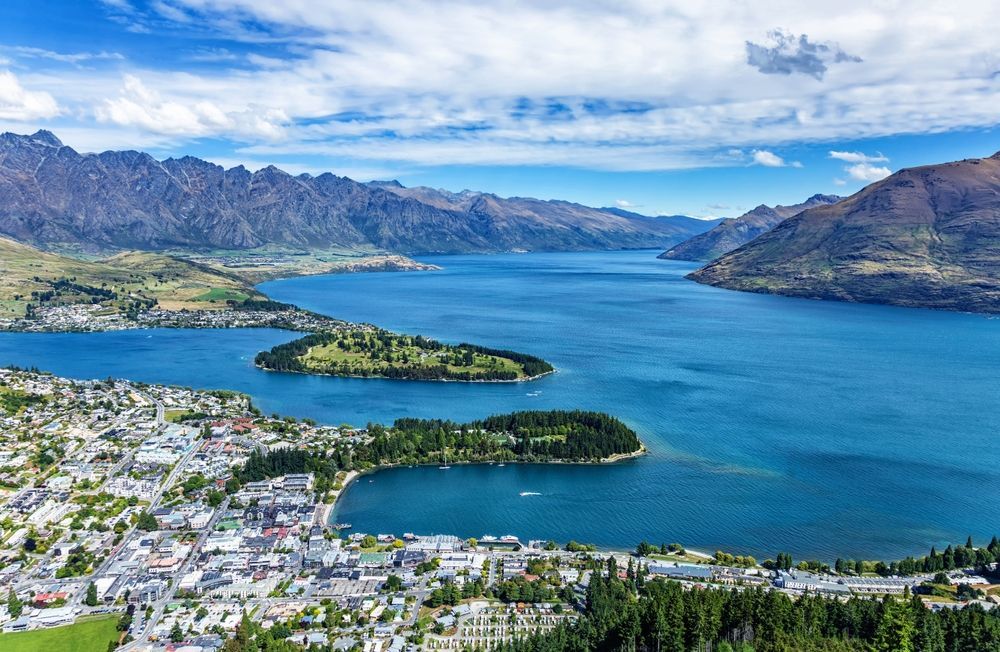Dermatologist Shortages in New Zealand: Opportunities for International Specialists
New Zealand has a critical shortage of
dermatologists, with the current workforce estimated to be just one third of the normal in other developed countries. This creates opportunities for international specialist dermatologists and this article will look at the options to practice in the country in both public and private sectors.
Dermatology - A Medical Specialty
Dermatology, once regarded as an unpopular and limited medical speciality, recently emerged as one of medicine's most competitive and highly paid specialities. This was attributed to the increasing incidence of skin cancer diagnoses in recent decades and a range of new treatment modalities for common cutaneous pathologies. Dermatology is now a vital medical specialty, addressing an array of skin conditions which significantly impact patients' quality of life and psychological wellbeing.
Dermatology has become a popular career choice for resident doctors. Places on residency training programs are highly sought after in the USA and many other developed countries, where dermatology offers the prospect of a lucrative career and reasonable working hours without busy on call rotas. However New Zealand is an exception to this trend and faces the predicament of having the world's highest rate of melanoma and the developed world's lowest levels of dermatologists creating a legacy of poor prognosis and reduced survival rates for skin cancers.
Melanoma incidence
Melanoma is the most serious form of skin cancer, and New Zealand has the highest rates of it worldwide, despite its small population. Approximately 2,800 invasive melanomas are reported each year and roughly one in fifteen fair-skinned New Zealanders can expect to develop a melanoma in their lifetime. Skin cancers account for an estimated 80% of all new cancers diagnosed in the country annually.
Whilst Australia and New Zealand are historically similar countries with almost identical demographics, studies have shown that New Zealand's melanoma mortality rates have increased more rapidly than Australia's, with higher overall rates seen in New Zealand in recent decades, particularly in older people.
Contributing factors
Several factors contribute to New Zealand's high rates of skin cancer:
- Population: A large portion of the population has fair skin, especially those of Anglo-Celtic ancestry, which is highly susceptible to sun damage.
- UV radiation: The country has naturally high UV levels, which are intensified by a relatively unpolluted atmosphere and proximity to the Antarctic ozone hole.
- Lifestyle: Many New Zealanders have outdoor lifestyles, increasing their overall sun exposure.
- Prevention: Research suggests that New Zealand has lagged behind Australia in government-funded skin cancer prevention campaigns, with prevention efforts often fragmented and reliant on charities.
Non-melanoma skin cancer (NMSC) incidence
Non-melanoma skin cancers (NMSC), which include basal cell carcinoma (BCC) and squamous cell carcinoma (SCC), are far more common than melanoma. Incidence data is less precisely tracked than melanoma, as NMSCs are not mandatory to report nationally.
- Case numbers: An estimated 90,000 non-melanoma skin cancers are treated annually.
- Global comparison: Studies have shown that Auckland, New Zealand, has the highest reported incidence of invasive NMSC in the world.
- Incidence trends: The incidence of NMSC has been increasing, particularly among the population over 50 years of age.
The Current Shortage of Dermatologists in New Zealand
Despite New Zealand having one of the highest incidences of skin cancer and other skin conditions in the world, it has a relatively small dermatology workforce, with estimates suggesting fewer than one dermatologist per 100,000 people. The recommended ratio in many developed countries is two to three dermatologists per 100,000.
New Zealand has just 30-50% of the dermatologist workforce it needs to put it on par with neighbour Australia and the distribution of specialists is also uneven, with metropolitan centres such as Auckland and Wellington better served than regional and rural areas.
The implications of the dermatologist shortage are profound and manifested by lengthy waiting lists for hospital out patient appointments, considerable delays in attaining a diagnosis and commencing treatment and poorer survival rates and prognostic indicators for most skin diseases. Delays of several months from initial referral to specialist consultation are common, especially for non-urgent conditions.
In New Zealand, the stark shortage of dermatologists presents a remarkable opportunity for skilled professionals in surgical, medical, or aesthetic dermatology in both public and private sectors.
Subspecialist Opportunities
Several subspecialties exist within the scope of dermatology, allowing for focused expertise in specific areas of skin, hair, and nail disorders. These areas can be broadly categorized into surgical, medical, and cosmetic fields.
Medical Dermatology
Medical dermatology practice makes up the bulk of hospital general dermatology with a focus on the diagnosis and treatment of the common chronic inflammatory and autoimmune skin conditions such as psoriasis, eczema, and lupus. Many patients in New Zealand face long waits for specialist review and management of complex dermatological diseases, particularly in secondary and tertiary hospital services.
Allergy-related skin disorders are an important subspecialty area. Patch testing is used to identify allergic contact dermatitis caused by substances such as preservatives, fragrances, and metals. In New Zealand, access to patch testing is limited, and dermatologists with expertise in allergy diagnostics and management are highly valued. Expansion of these services is a priority for many hospitals and specialist centres.
Photo dermatology manages skin disorders caused by light and ultraviolet (UV) radiation, and involves the use of light-based therapies (e.g., UVB and PUVA). Phototherapy is widely used in New Zealand for conditions such as psoriasis, eczema, vitiligo, and cutaneous T-cell lymphoma. With demand outstripping service capacity, dermatologists trained in phototherapy protocols can significantly improve patient access to this evidence-based treatment. Experience in managing safety protocols and long-term patient follow-up is particularly desirable.
Pediatric Dermatology focuses on the diagnosis and treatment of skin, hair, and nail conditions in infants, children, and adolescents.
Surgical Dermatology
Demand is particularly strong for dermatologists skilled in surgical procedures, including the excision of skin cancers, flap and graft repairs, and Mohs micrographic surgery (Micrographic Dermatologic Surgery), a precise surgical technique used to remove high-risk skin cancers while sparing the maximum amount of healthy surrounding tissue.
Aesthetic Dermatology
The private sector offers opportunities for dermatologists with an interest in aesthetic procedures, including botulinum toxin injections, dermal fillers, laser treatments, and cosmetic skin care. These services are increasingly in demand in urban centres and can provide a lucrative career path alongside medical or surgical practice.
Salaries and Benefits for Dermatologists in New Zealand
Public Sector
Dermatologists employed in the public health system are compensated according to the SECA National Collective Agreement for senior medical officers (SMOs). This is negotiated annually by the Association of Salaried Medical Specialists (ASMS) and Health New Zealand (HNZ), the public healthcare organisation. Salaries are determined by years of experience and supplemented with allowances for additional duties. This is covered in detail on our article on physician remuneration in New Zealand and summarised below:
- Salary range: an annual rate for a 40 hour working week dependent upon seniority and experience.
- On-call and additional duties: Extra allowances are available for on-call work, clinical leadership, and teaching responsibilities.
- Leave: Four to six weeks of annual leave, plus sick leave and professional development leave.
- Continuing medical education (CME): Paid CME expenses (usually NZD $16,000 every three years), with protected leave for conferences and training.
- Superannuation: Employer contributions of up to 6% depending on scheme participation.
- Relocation expenses: reimbursement of expenses for relocation up to NZD 25,000
Private Sector
In the private sector, dermatologists are paid a salary which is negotiable or by fee for service which is activity dependent. The latter usually requires that a percentage of total income is paid to the practice for administrative costs. Private clinic dermatologists may earn significantly more than their public sector colleagues, particularly in urban centres where demand for aesthetic procedures is high.
Annual Income can exceed NZD $500,000 for those combining private practice with procedural dermatology, particularly MohS Surgery. Business opportunities exist for partnership or ownership of clinics and flexible working arrangements are common, offering a better work–life balance.
Urban Versus Regional Postings
When considering a move to New Zealand, dermatologists should weigh the benefits and challenges of working in different locations and their alignment with personal career and lifestyle goals.
Urban Centres (Auckland, Wellington, Christchurch, Hamilton, Dunedin)
The largest urban centres of north and south islands are the locations of the tertiary hospitals, university departments and largest populations. These offer premier hospitals with dermatology departments and academic opportunities. There is greater access to subspecialist colleagues, advanced equipment, and private practice opportunities with a high demand for aesthetic dermatology and private cosmetic procedures.
These advantages must be balanced against intense competition for jobs and higher living costs (particularly housing in Auckland).
Regional and Rural Centres (Palmerston North, Hastings, Nelson, Napier, Invercargill, Whanganui, Gisborne)
Regional and rural areas have secondary care hospitals of varying sizes, ranging from 400 beds down to less than 100 beds. These facilities often have critical shortages of dermatologists, creating secure career opportunities for international physicians in regions where living costs are lower and competition for jobs and housing less intense. For many international doctors, regional postings offer an excellent entry point into New Zealand practice, with potential to transition later into urban private practice once established.
The Pathway to Working as a Dermatologist in New Zealand
Internationally trained dermatologists must obtain registration with the Medical Council of New Zealand (MCNZ) in order to practise independently. There are two pathway options which may be taken, depending upon proposed duration of stay in New Zealand and specialist qualification.
Provisional Vocational Registration
For specialists from other countries, an application should be made for determination of eligibility for provisional vocational registration with the MCNZ. This involves completing an application form with evidence of postgraduate specialist training, qualifications, practice experience and credible supporting references.
The application is initially reviewed by the MCNZ and then forwarded to the Royal Australasian College of Physicians for assessment. Once eligibility is approved or disapproved, the MCNZ then communicates the result to the physician. Dermatologists approved for provisional registration will have some conditions imposed upon their practice with a supervision period of 6-12 months. Upon successful completion of this probationary period, an application for vocational registration can be made.
Locum tenens / temporary practice
Dermatologists holding an approved qualification may apply for a special purpose locum tenens registration permitting practice for a maximum of 12 months duration.
Approved qualifications are:
- UK: MRCP and CCT in dermatology
- Canada: FRCPC
- USA: American Board of Dermatology American Osteopathic Board of Dermatology
- Ireland: MRCPI and CSD in dermatology
In addition to professional licensing, candidates will need a work visa or residency permit. Employers often support visa applications, especially in areas of high shortage.
Securing a Dermatology Job
Dermatology jobs are available across both the public sector (hospitals) and the private sector (specialist practices and aesthetic clinics).
Here are the key steps:
1: Prepare CV and Credentials
Draft a template CV which can be modified for each job application and updated regularly.
Prepare copies of credentials and have these verified at primary source if not already done. See our article on EPIC reports.
2: Register CV with a recruitment agency
Register your CV with a recruitment agency and sign up for job alerts so that you receive instant notifications of new jobs. Discuss your job search with the agency and create a strategy for finding a desirable position.
3: Research Locations
Research locations of New Zealand and identify those which align with your personal and professional goals.
4: Define Your Scope of Practice
Define your own scope of practice and apply for jobs which are appropriate. Most hospital jobs in the public sector are "bread and butter " dermatology jobs with few options for surgical or aesthetic practice.
Private practices often specialise in specific fields such as aesthetics, phototherapy, patch testing, allergies or surgical dermatology.
Direct your energies only towards the jobs which offer a suitable scope of practice and draft your CV accordingly.
5: Apply for Dermatology Jobs
Apply for dermatology jobs which align with your scope of practice, are located in areas where you can conceivably live and offer financial compensation and career opportunities which are attractive or at least acceptable.
Your first job in New Zealand is an entry point and may not be ideal in all respects but a move to a more desirable position is possible later on.
6: Job Interviews
Job interviews are conducted remotely with a panel of 4, usually. Zoom and teams are the preferred modes and a duration of 30-60 minutes is normal. Questions probe motivation, skills, team working ability and career goals.
7: Offers and Negotiations
Successful interviews usually lead to job offers which require careful review and sometimes negotiation. The advice of an experienced recruitment consultant is vital.
8: On boarding
Before starting work in your new role, you need a license to practice medicine and a visa which permits you to work.
Conclusion
The high incidence of dermatological pathology in New Zealand combined with the acute shortage of dermatologists, creates an opportunity for international dermatologists which is probably unprecedented in the developed world. There are prospects for private practice development, public sector and academic careers and the acquisition of new skills. New Zealand offers a dynamic and rewarding environment for dermatologists seeking to advance their careers.
Looking for a dermatology role in New Zealand?
- Register your CV with Odyssey Recruitment
- Browse current dermatology vacancies
- Contact our specialist recruiters to discuss your eligibility and career options
10 September 2025
Share this post on Social Media
Leave a Comment
SEARCH JOBS
Ready for a change? Whether you’re looking for higher compensation, greater autonomy, a better work-life balance, or just a change in scenery, we have job opportunities in wonderful locations across the world. Start your medical or dental job search today and embark on your next career move.
SIGN UP FOR JOB ALERTS
We believe everyone deserves to find their dream job. Be the first to hear about new practice opportunities in exciting locations across the world Simply sign up for job alerts in your chosen field, and we will email you when a new job in your specialty becomes available.


















